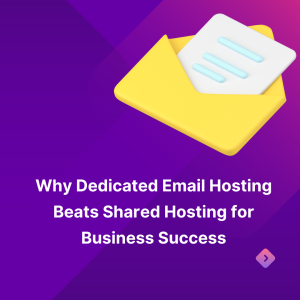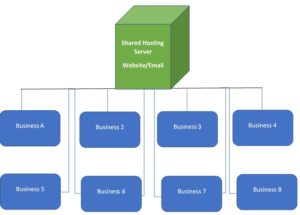1. Understanding Email Hybrids
We live in an era where everything is hybrid—hybrid cars, hybrid plants, hybrid apps, and now, hybrid email solutions. A hybrid combines two or more different elements or systems to create something that offers the advantages of both. The goal of a hybrid is often to maximize efficiency, performance, or value by blending the strengths of each component.
For example:
- In cars, a hybrid car combines a traditional internal combustion engine with an electric motor to improve fuel efficiency.
- In plants, hybrids are created by crossbreeding different species to develop plants with desirable traits, like better resistance to disease.
- In technology, hybrid apps combine elements of web applications and native mobile apps to deliver a versatile user experience.
In general, a hybrid solution seeks to bring together the best of different worlds to maximize value, lower cost and/or achieve better results.
In business, value and cost are always key considerations.
An email hybrid solution is a system that combines different types of email services or platforms to meet the diverse needs the of an organization. Instead of using a single email solution for all users, a hybrid approach allows a company to mix and match two or more email platforms or configurations, optimizing performance, cost, and functionality for different user groups.
The purpose of a hybrid email solution is to tailor the email system to the needs of the different groups of users in an organization, ensuring the right balance between functionality and cost-efficiency, while improving flexibility and scalability.
Take Kachooks Limited as an example. They have implemented Email Solution Y for all 20 of their staff members. While Ben in the Accounts Department, Joy, the operations manager, and William in IT fully utilize Email Solution Y’s capabilities, the other 17 employees only use one or two core functions of the platform. In this case, using the same solution for everyone is inefficient.
The 17 staff could be better served by Email Solution Z which provides just enough functionality for them to perform their roles. It also comes at a lower cost than Email Solution Y. Kachooks Limited could, therefore, adopt a hybrid approach, using both Email Solution Y and Email Solution Z to maximize value and reduce costs.
2. Types of Email & Collaboration Hybrids
There are three types of email and collaboration hybrids:
- Cloud-2-on-premise hybrid,
- Cloud-2-cloud hybrid, and
- Cloud-on-cloud hybrid.
Cloud-2-on-premise hybrid: A cloud and on-premise email hybrid is where an organization chooses to have some users on a cloud solution but maintain others on an on-premise server. The justification for this segregation is often because the cost of moving all users to the cloud is too high. However, this is not an ideal solution because despite moving to the cloud, you will still have to contend with the myriad of issues plaguing on-premise mail servers. If you are not already familiar with these, you can read more on the challenges of on-premise or self-hosted email hosting solutions here.
Cloud-2-cloud hybrid: This type of hybrid entails an organization having one group of users hosted by one cloud provider and another group of users by a different cloud provider. Cloud solutions present a wide range of benefits to organizations. You can read more about the benefits of cloud email solutions here.
Here are two common email hybrids and how they work
Hybrid of MailSafi + Google Workspace (formerly G Suite)
Hybrid of MailSafi Email + Microsoft 365 (formerly Office 365)
Cloud-on-cloud hybrid: This type of hybrid entails having users set up on two or more different cloud plans but by the same service provider. MailSafi offers a cloud-on-cloud hybrid of MailSafi Business + MailSafi Enterprise. Or, in some cases, the hybrid can also include MailSafi Basic.
3. Why You Should Consider a Business Email Hybrid for Your Organization
Email and collaboration hybrids are necessary because businesses need higher availability and reliability in their communications at a cost-effective price.
Businesses already using various premium cloud solutions are realizing that only very few users are utilizing the full potential of these solutions while majority of the users are only using the basic features.
While businesses may be enticed by premium business email hosting services, it might not make business sense to invest in premium features for all users. This rationale is what has led to the evolvement of business email hybrids. To reduce the total cost of ownership without depriving those who need to use these premium features of their productivity, you can opt for a hybrid email solution for your business.
When it comes to email and collaboration tools, it’s not necessarily the case that only senior staff—such as MDs, CEOs, CTOs, or management—will need premium features. A marketing assistant or financial analyst, for example, might require advanced tools to analyze data and collaborate in real time with colleagues. The key is to conduct a needs-based analysis of your users to determine who requires premium features for their roles and who can operate efficiently with just basic functionalities.
Some users may need messaging platforms not just with email but with advanced collaboration features:
- Access to email anytime, anywhere
- Video/audio chat, calls
- Online storage drive to create and share spreadsheets and presentations
- File sharing and synchronization features
Group your users
An email hybrid allows you to group your users according to their needs/requirements. What does Ann in HR need to do her work? Does she need email only or does she also need to collaborate? What does Josh, the cleaner, need to get his work done? Does he need email only or does he also use collaboration tools? What does the CEO need? And so on.
Once you have grouped your users according to their needs, you can then invest in a premium service for the users who need both email and collaboration, and only pay for email for the group of users that does not require collaboration tools.
By grouping your users, you can then only pay for what you need for each group of users. For more specific cost savings examples you can check out our blogs on:
Hybrid of MailSafi Email + Microsoft 365 (formerly Office 365)
Hybrid of MailSafi Email + Google Workspace (formerly G Suite)
Get in touch with us for a quote for your business and we will discuss and work out for you what you stand to save by opting for MailSafi as an alternative email service.
![]()




Pingback: Cloud Email Hybrid: MailSafi Business + MailSafi Enterprise | MailSafi
Pingback: Microsoft 365 + MailSafi Email Hybrid | MailSafi [2020]
Pingback: Google Workspace + MailSafi Email Hosting Hybrid | MailSafi [2020]
Pingback: Professional Business Email: Email Like a Pro with the Best | MailSafi
Pingback: Email Hybrids: Why They're Important for Busine...
Pingback: The Benefits of Managed Server Hosting for Small Businesses » Kaluari Blog
Pingback: Cloud Email Hosting for Business: The Benefits | MailSafi